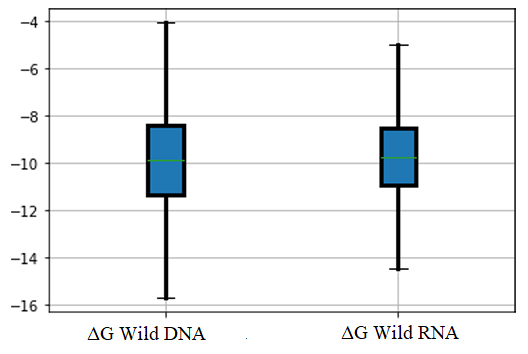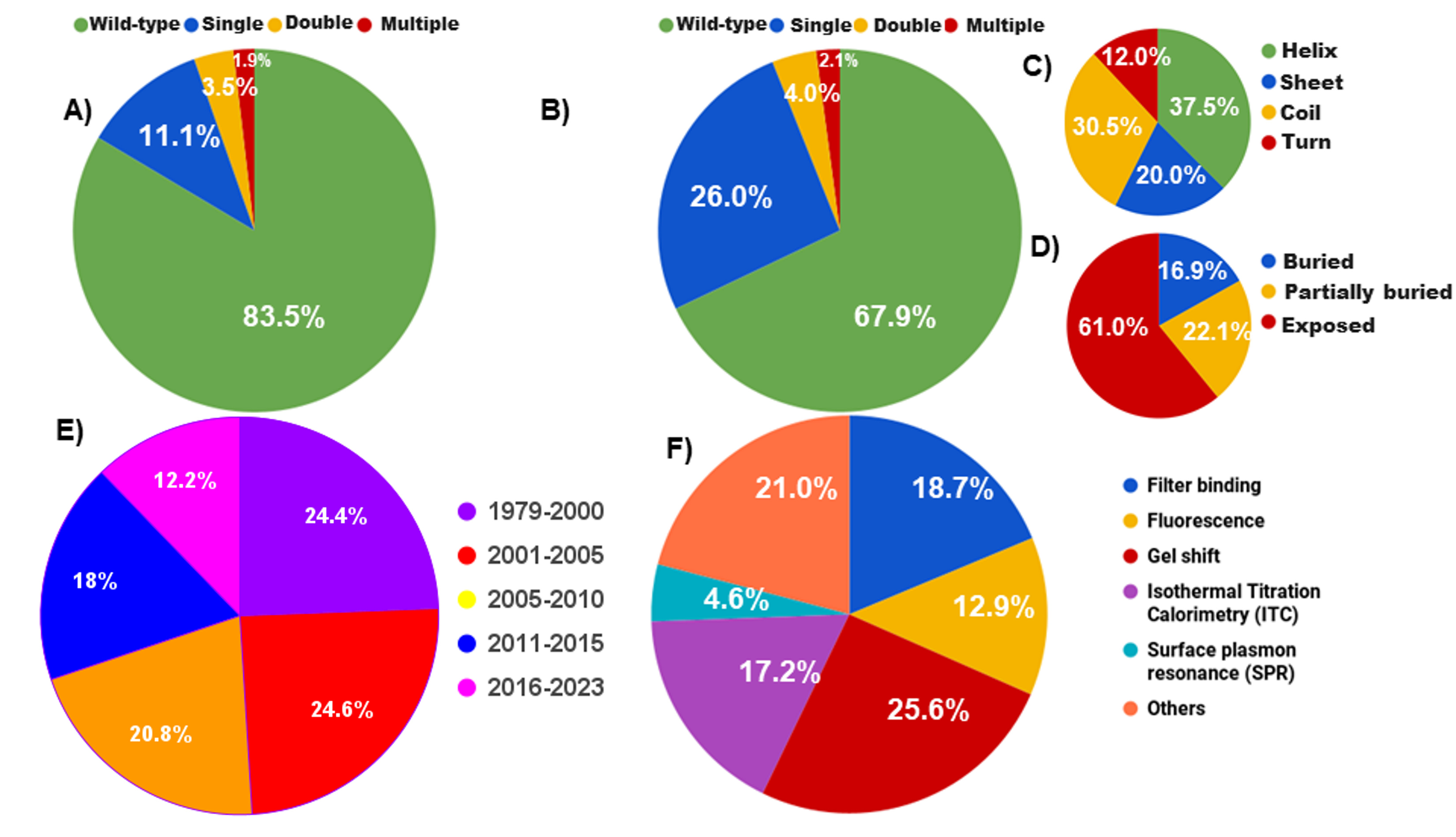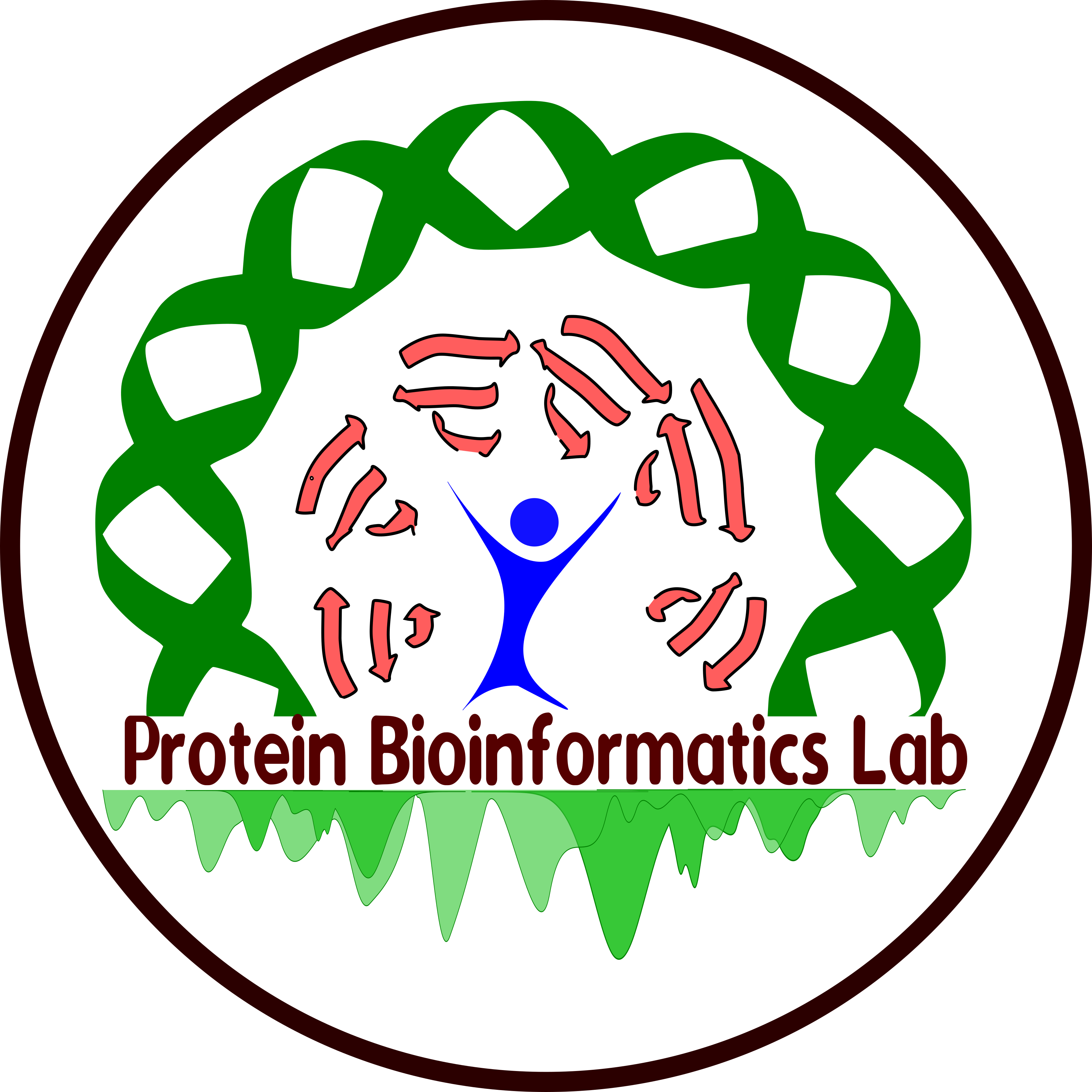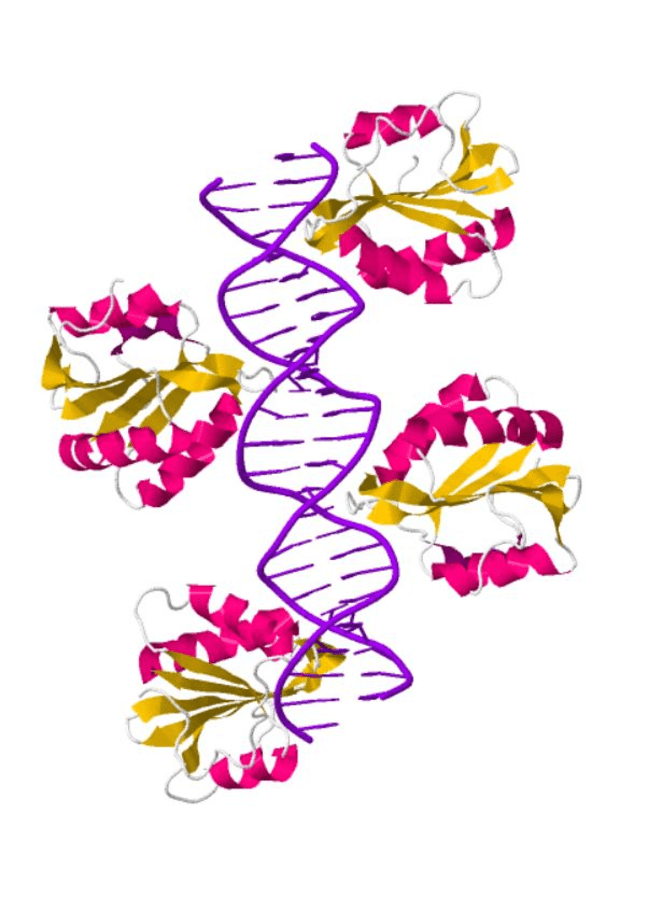STATISTICS OF ProNAB DATABASE
| Number of entries | 20219 |
| Number of proteins | 1041 |
| Number of organisms | 229 |
| Number of UniProt IDs | 909 |
| Number of PDB IDs for Protein-DNA complexes | 802 |
| Number of PDB IDs for Protein-RNA complexes | 340 |
| Number of entries with Protein-DNA affinity | 14732 |
| Number of entries with Protein-RNA affinity | 5326 |
| Number of entries with Protein-DNA/RNA Hybrid affinity | 161 |
| Kd (M) | 2.10E-15 to 9.80E-01 |
| ΔG (kcal/mol) | -20.01 to -0.01 |
| ΔΔG (kcal/mol) | -7.99 to 9.7 |
| Number of articles | 1265 |
| Publication years | 1979-2023 |
DETAILED STATISTICS
Statistics of ProNAB database based on mutations, secondary structure of mutants, solvent accessibility of mutants, publication years and methods
Statistics of ProNAB database based on the distribution of (A) wild-type and mutant data in Proteins, (B) wild-type and mutant data in nucleic acids, (C) secondary structure of mutants, D) solvent accessibility of mutants, (E) publication years and (F) methods
Distribution of dissociation constant (Kd) in DNA and RNA (in nM)
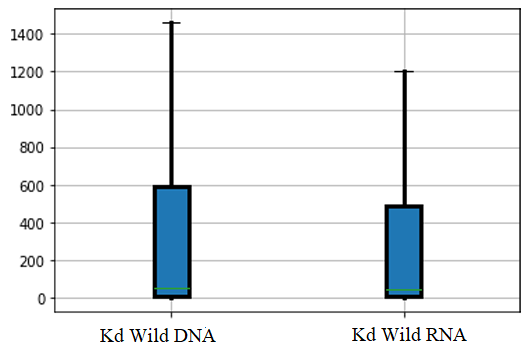 Distribution of ΔG values in DNA and RNA (in kcal/mol)
Distribution of ΔG values in DNA and RNA (in kcal/mol)
